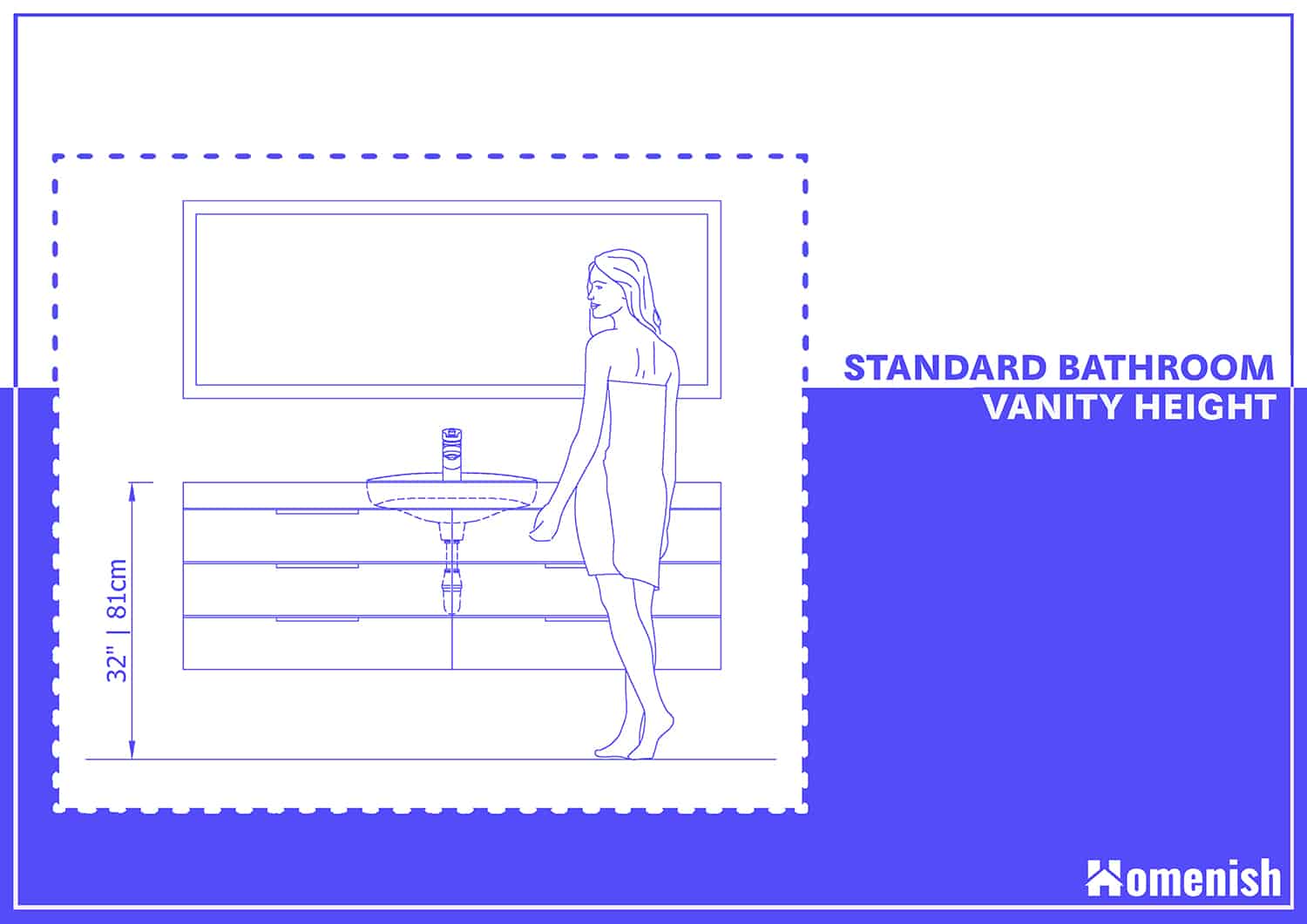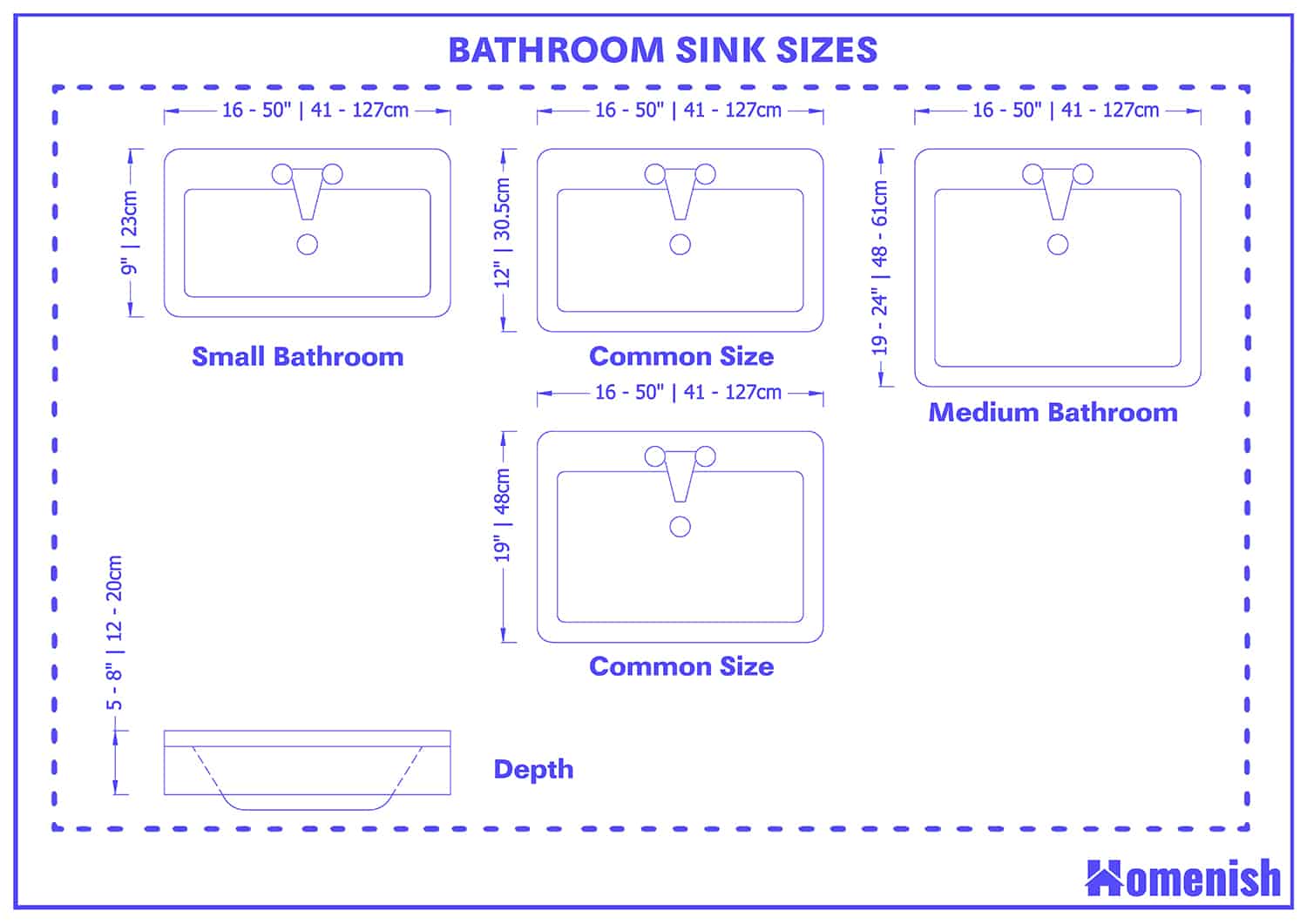Sink Height Standards

Average bathroom sink height – Bathroom sink height standards are essential for ensuring comfort, accessibility, and proper functionality in residential and commercial settings. These standards consider various factors, including user height, reach, and plumbing requirements.
The average bathroom sink height ranges from 28 to 32 inches, providing comfortable access for most users. For those seeking a more personalized touch, drop in bathroom sinks lowes offers a wide selection of options that allow for customization of height and style.
Ultimately, the ideal bathroom sink height depends on individual preferences and the overall design of the bathroom space.
Residential Bathroom Sink Heights
In residential bathrooms, sink heights typically range between 30 to 36 inches from the floor to the top of the sink rim. This range accommodates the average height of adults and provides a comfortable reach for most users.
When selecting a bathroom vanity, it’s important to consider the average bathroom sink height. The ideal height for a bathroom sink is typically between 30 to 36 inches from the floor. For those seeking a sleek and compact option, the bathroom vanity 48 single sink is an excellent choice.
Its compact size and single sink design make it perfect for smaller bathrooms or powder rooms. Additionally, the average bathroom sink height is well-suited for this vanity, ensuring a comfortable and ergonomic experience.
- Master Bathroom: 32-36 inches for taller users and double vanities.
- Guest Bathroom: 30-32 inches for a wider range of user heights.
- Powder Room: 30-32 inches for smaller spaces and single vanities.
Commercial Bathroom Sink Heights, Average bathroom sink height
Commercial bathroom sink heights are slightly lower than residential standards, typically ranging from 28 to 32 inches. This is due to the need to accommodate a wider range of users, including children and individuals with disabilities.
Factors Influencing Sink Height Standards
- User Comfort: Sink height should allow users to comfortably reach the faucet and wash their hands without straining.
- Accessibility: Lower sink heights are more accessible for individuals with disabilities or short stature.
- Plumbing Considerations: Sink height must be coordinated with plumbing fixtures to ensure proper drainage and water flow.
Variations in Sink Height
The height of bathroom sinks can vary significantly, primarily due to several factors that influence the overall design and functionality of the bathroom. These factors include user height, countertop thickness, and vanity style.
To ensure optimal comfort and accessibility for users, it’s essential to consider ergonomic principles when determining the ideal sink height. This involves finding a height that allows for comfortable handwashing, brushing teeth, and other bathroom tasks without causing strain or discomfort.
User Height
User height plays a crucial role in determining the appropriate sink height. Taller individuals typically require a higher sink to avoid bending over excessively, while shorter individuals may prefer a lower sink for easier access. The optimal sink height should allow the user to stand upright with their elbows slightly bent when using the sink.
Countertop Thickness
The thickness of the countertop can also affect the overall sink height. Thicker countertops require taller sinks to maintain a comfortable working height. Conversely, thinner countertops can accommodate lower sinks without compromising accessibility.
Vanity Style
The style of the vanity can also influence the sink height. Floating vanities, which are mounted on the wall without legs, typically have higher sinks than traditional vanities with legs. This is because the absence of legs allows for more flexibility in adjusting the sink height.
Customizing Sink Height: Average Bathroom Sink Height

Sink height can be customized to meet specific needs, whether it’s for accessibility, aesthetics, or plumbing requirements. There are several methods for adjusting sink height, each with its own advantages and disadvantages.
Vanity Riser
A vanity riser is a platform installed between the sink and the vanity cabinet. It raises the sink to a more comfortable height, making it easier to reach and use. Vanity risers are available in various heights and materials, allowing for customization to specific needs.
Taller Faucet
Installing a taller faucet is another way to increase the height of the sink. Taller faucets provide more vertical clearance, making it easier to wash hands, brush teeth, or fill containers. However, taller faucets may not be suitable for all sink types or bathroom designs.
Advantages of Customizing Sink Height
- Improved accessibility for individuals with physical limitations or different heights.
- Enhanced aesthetics by matching the sink height to the overall bathroom design.
- Optimized plumbing requirements by adjusting the sink height to accommodate specific drainpipe locations.
Disadvantages of Customizing Sink Height
- Additional cost and effort involved in modifying the vanity or installing a taller faucet.
- Potential impact on the overall bathroom design and aesthetics if the customization is not done thoughtfully.
- Plumbing complications if the sink height is raised too high, affecting the drainage system.